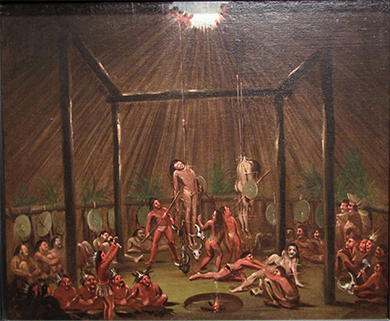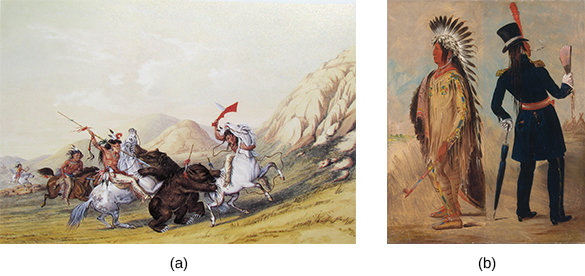| << Chapter < Page | Chapter >> Page > |
Pro-Jackson newspapers touted the president as a champion of opening land for white settlement and moving native inhabitants beyond the boundaries of “American civilization.” In this effort, Jackson reflected majority opinion: most Americans believed Indians had no place in the white republic. Jackson’s animosity toward Indians ran deep. He had fought against the Creek in 1813 and against the Seminole in 1817, and his reputation and popularity rested in large measure on his firm commitment to remove Indians from states in the South. The 1830 Indian Removal Act and subsequent displacement of the Creek, Choctaw, Chickasaw, Seminole, and Cherokee tribes of the Southeast fulfilled the vision of a white nation and became one of the identifying characteristics of the Age of Jackson.
Popular culture in the first half of the nineteenth century reflected the aversion to Indians that was pervasive during the Age of Jackson. Jackson skillfully played upon this racial hatred to engage the United States in a policy of ethnic cleansing, eradicating the Indian presence from the land to make way for white civilization.
In an age of mass democracy, powerful anti-Indian sentiments found expression in mass culture, shaping popular perceptions. James Fenimore Cooper’s very popular historical novel, The Last of the Mohicans , published in 1826 as part of his Leatherstocking series, told the tale of Nathaniel “Natty” Bumppo (aka Hawkeye), who lived among Indians but had been born to white parents. Cooper provides a romantic version of the French and Indian War in which Natty helps the British against the French and the feral, bloodthirsty Huron. Natty endures even as his Indian friends die, including the noble Uncas, the last Mohican, in a narrative that dovetailed with most people’s approval of Indian removal.
Indians also made frequent appearances in art. George Catlin produced many paintings of native peoples, which he offered as true representations despite routinely emphasizing their supposed savage nature. The Cutting Scene, Mandan O-kee-pa Ceremony ( [link] ) is one example. Scholars have long questioned the accuracy of this portrayal of a rite of passage among the Mandan people. Accuracy aside, the painting captured the imaginations of white viewers, reinforcing their disgust at the savagery of Indians.

George Catlin seized upon the public fascination with the supposedly exotic and savage Indian, seeing an opportunity to make money by painting them in a way that conformed to popular white stereotypes ( [link] ). In the late 1830s, he toured major cities with his Indian Gallery, a collection of paintings of native peoples. Though he hoped his exhibition would be profitable, it did not bring him financial security.

Catlin routinely painted Indians in a supposedly aboriginal state. In Attacking the Grizzly Bear , the hunters do not have rifles and instead rely on spears. Such a portrayal stretches credibility as native peoples had long been exposed to and adopted European weapons. Indeed, the painting’s depiction of Indians riding horses, which were introduced by the Spanish, makes clear that, as much as Catlin and white viewers wanted to believe in the primitive and savage native, the reality was otherwise.
In Wi-jún-jon, Pigeon's Egg Head (The Light) Going To and Returning From Washington , the viewer is shown a before and after portrait of Wi-jún-jon, who tried to emulate white dress and manners after going to Washington, DC. What differences do you see between these two representations of Wi-jún-jon? Do you think his attempt to imitate whites was successful? Why or why not? What do you think Catlin was trying to convey with this depiction of Wi-jún-jon’s assimilation?

Notification Switch
Would you like to follow the 'U.s. history' conversation and receive update notifications?